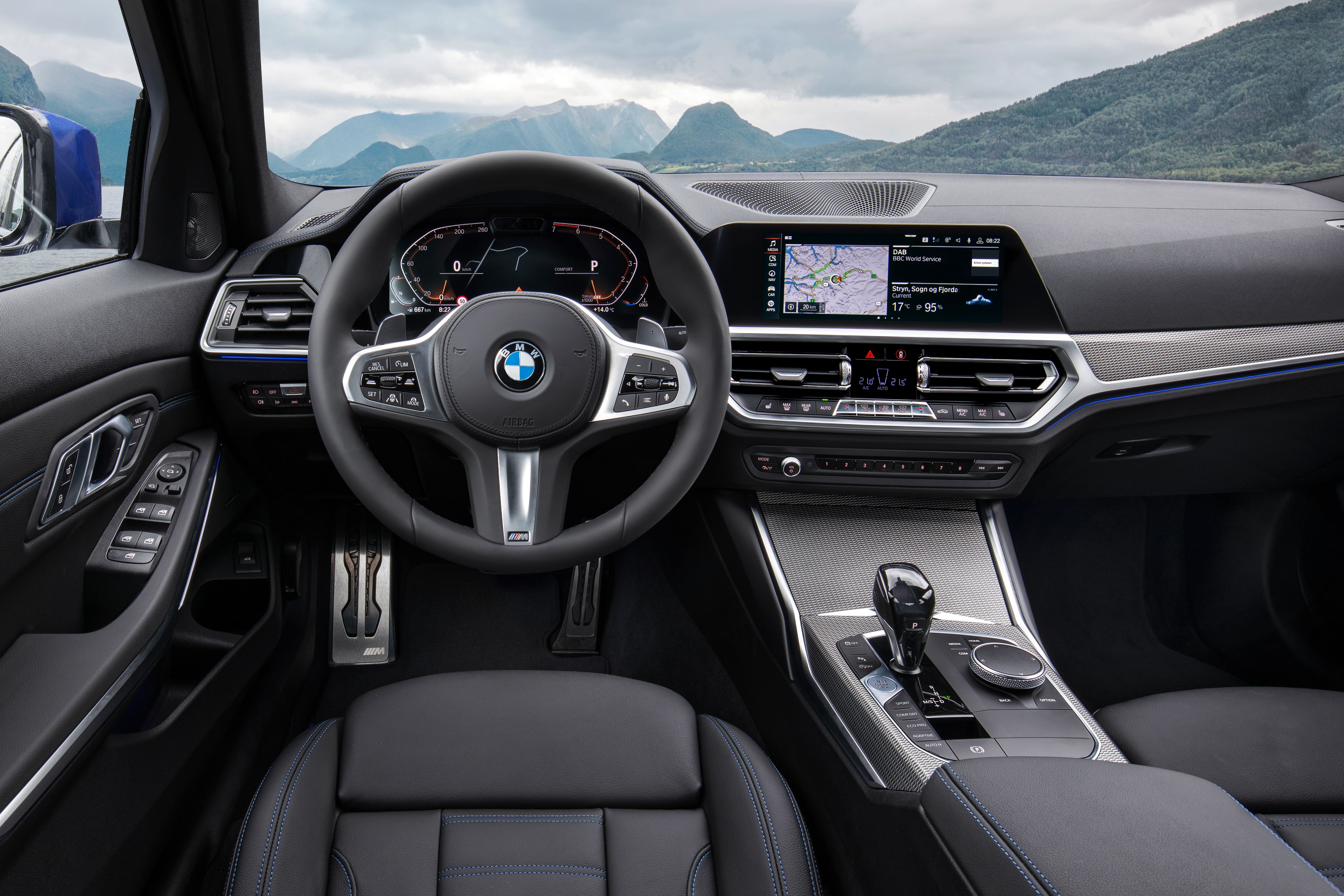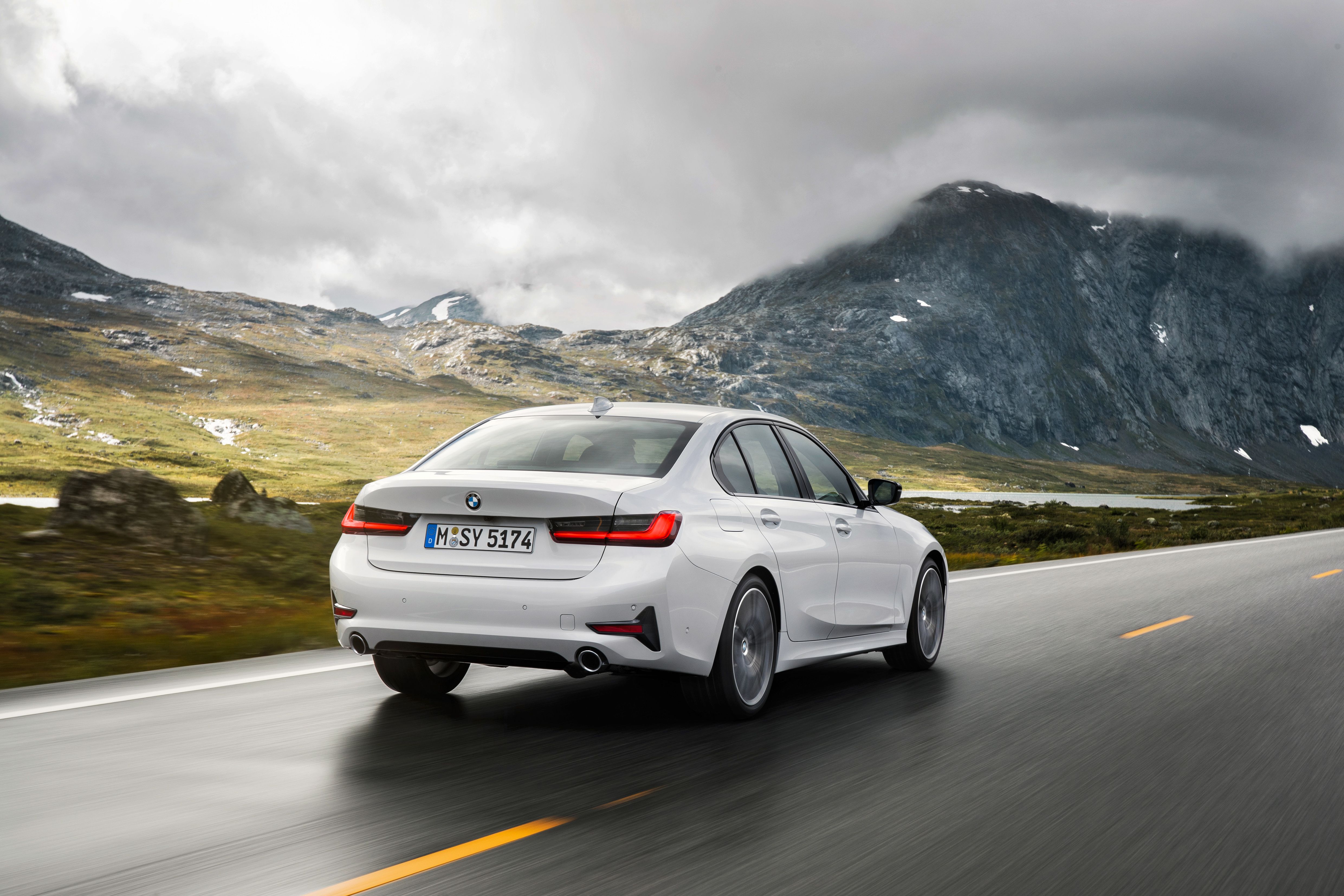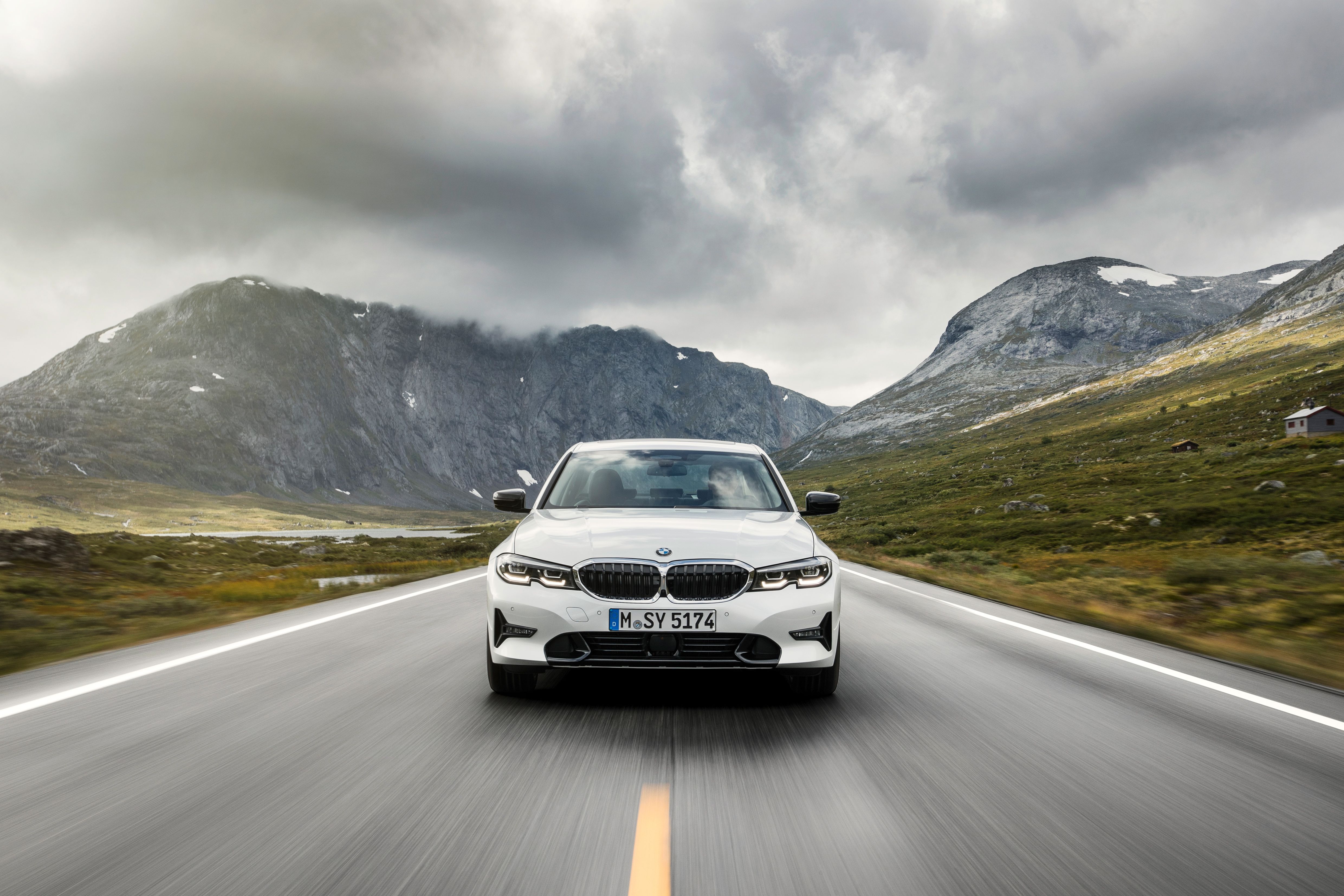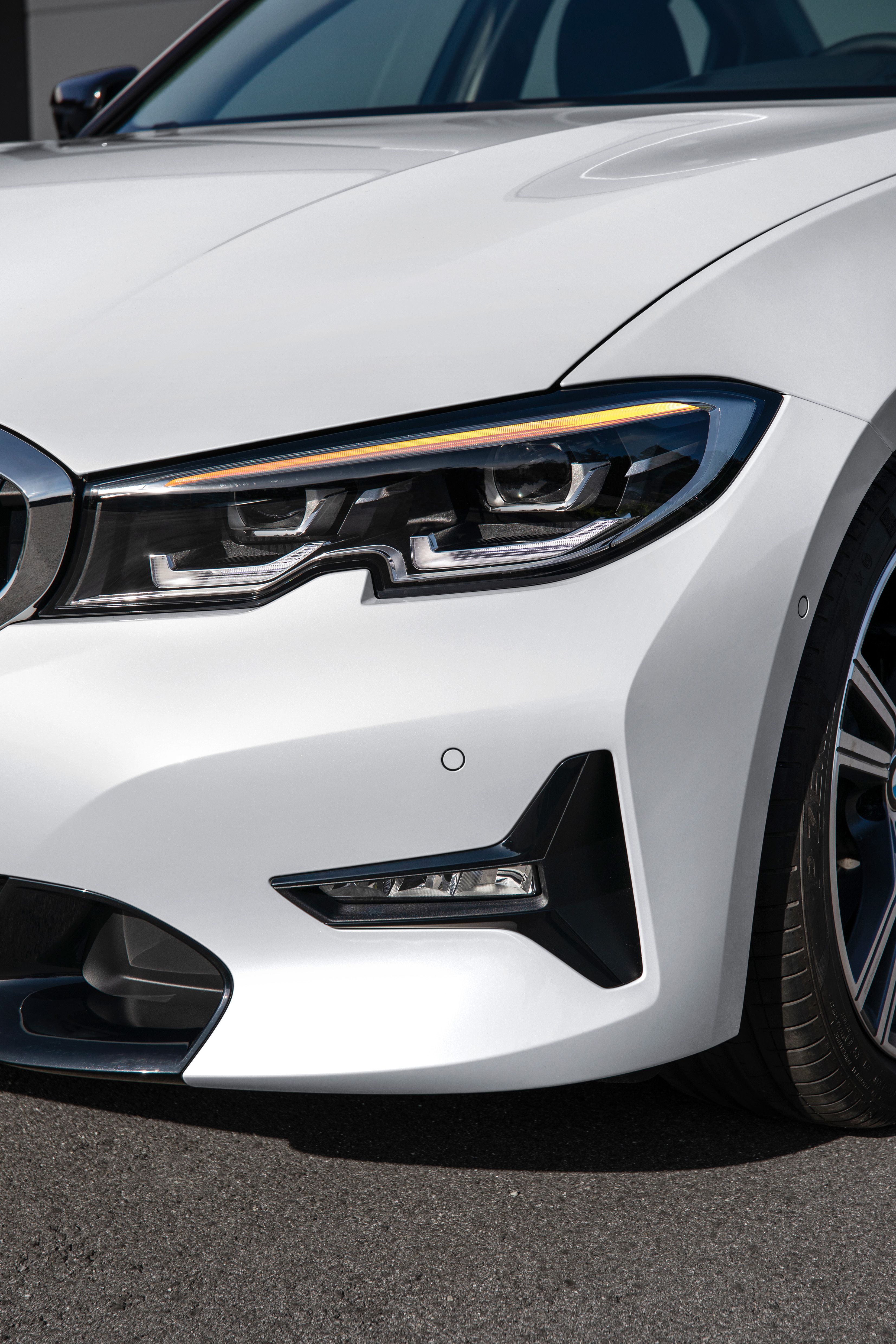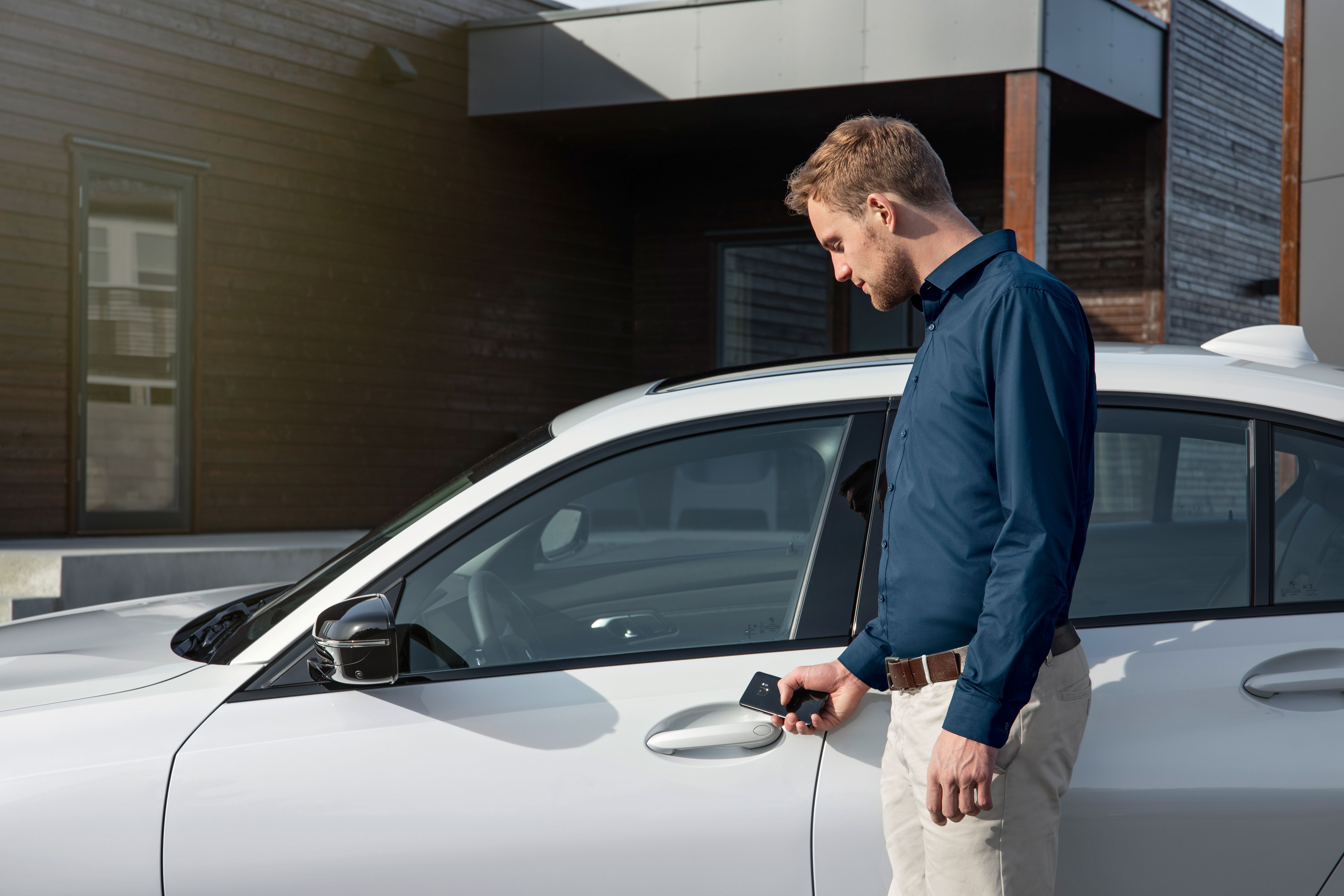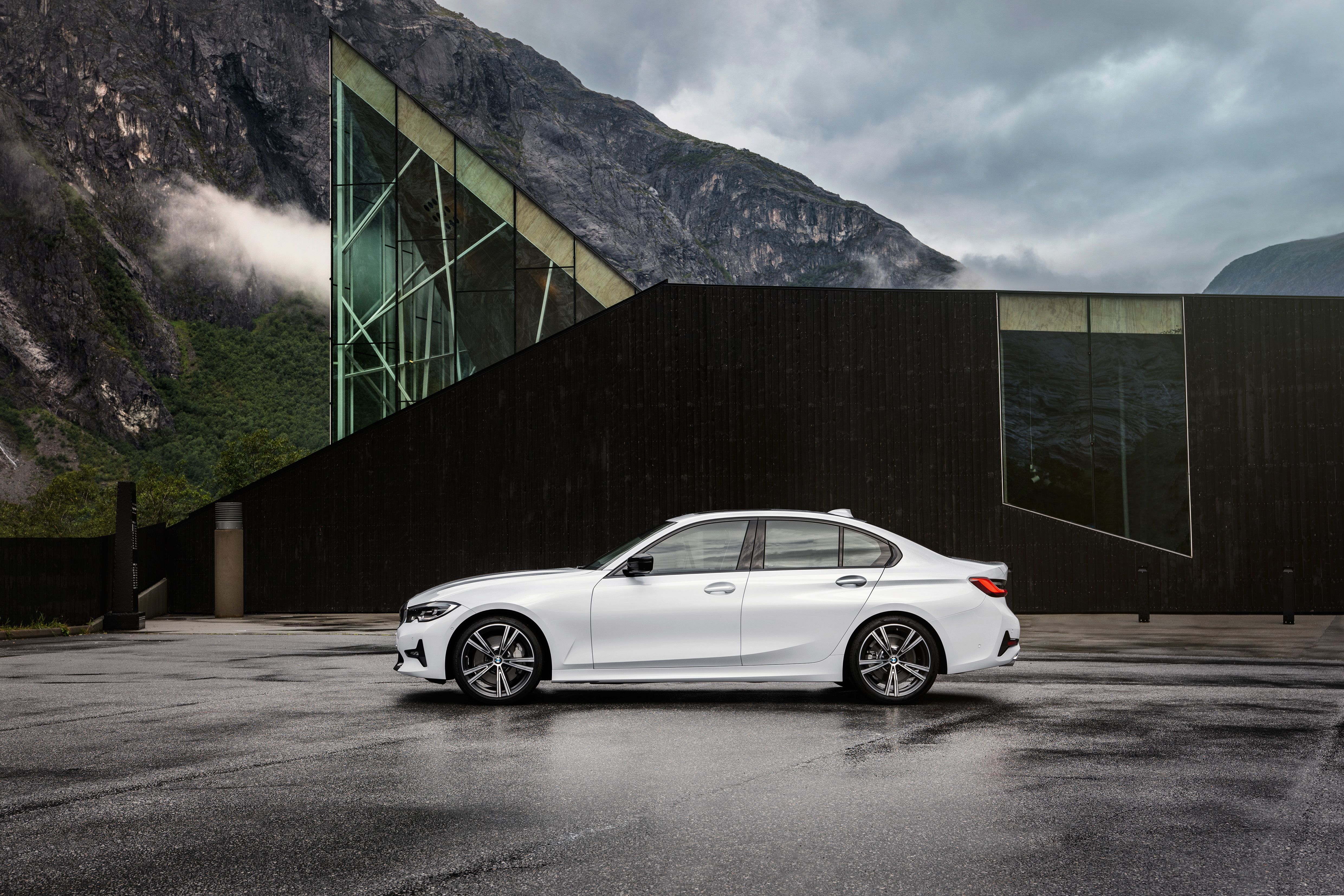While we’ve now driven the brand-new 2019 G20 BMW 3-series, we can’t quite tell you what it’s like. However, our man Jason Cammisa learned a lot about the underlying car. Here are the big points he thinks you should know about BMW’s new 3er before reading our first drive. – Ed.
NO MANUAL
You’ve probably heard it before, but it’s worth saying again: for the first time ever, the BMW 3-series isn’t available with a manual transmission. The Germans keep telling us that no one wants manuals, even as clutch-pedal-equipped Porsche 911Rs and GT3 Tourings and Cayman GT4s sell for up to hundreds of thousands of dollars over sticker—while their automatic equivalents remain glued to the showroom floor. Indeed something like 25 percent of six-cylinder 3-series buyers in the US opted for manual transmissions on the last-gen car. So rather than give them a new car to buy, BMW just wants them to check out the Genesis G70. Because we now live in a world where Hyundai sells a manual-transmission, rear-wheel-drive sedan and BMW doesn’t.
ONLY THE US GETS A REAR-WHEEL DRIVE M340i
For the rest of the world, buying an M340i means getting all-wheel drive. Not so in North America; we’re the only market that will have a rear-wheel drive variant. It’ll come standard with a mechanical limited-slip differential, too. But, of course, no manual transmission.
STIFF IS GOOD
The previous (F30-chassis) 3-series was notoriously weak—so much so that, rumor has it, BMW’s M Division refused to build the M3 until BMW stiffened the front structure. That happened with the facelift F30s, and it helped a good bit. The G20 is 25 percent stiffer overall than that reinforced car. In places, such as the suspension mounting points, it’s 50 percent stiffer. That should help steering precision and handling — as well as help eliminate the squeaks and rattles that come from a flexing chassis.
BMW
DUAL PINIONS FOR STEERING FEEL
Internal resistance in an electrically assisted steering system absorbs feedback; thankfully, the four-cylinder G20 is getting the lower-friction, dual-pinion rack system from the X3 M40i. Unfortunately, it doesn’t fit with the six-cylinder, so M340i models keep the belt-driven APA-style steering from the F30. The 330i’s lower-friction system, combined with less weight up front, should help the base car steer better than the M340i.
THE B46 ENGINE GETS TU’ed
TU means Technical Update, and the 330i’s engine is getting one. It remains a two-liter four-cylinder and gains 7 hp and 37 lb-ft of torque (for 255 hp and 295 lb-ft total), but most of the changes are for efficiency and simplicity. For example, there is now a single, simplex timing chain for the cams, the accessory belt drive has been simplified, and the crankshaft has been lightened. The direct injection system pressure has been raised from 200 to 350 bar, and the injectors can now perform multiple injections for reduced particulate emissions at low revs. The electrically actuated wastegate can open wider for more even heat distribution on the catalytic converter, assisting with warmup. EPA results aren’t yet in, but expect the G20–which has a lower drag coefficient (0.26 versus 0.29) than the F30–to achieve better fuel economy.
STEERING SPORT MODE
Electrically power-assisted steering (EPAS) has many benefits, including the ability to filter out things that would “fatigue” normal drivers. This includes a pull to one side from improper wheel alignment or the crown of the road, or even a shimmy from out-of-balance tires. The latter is something that those old very-communicative hydraulically assisted BMWs were particularly susceptible to — and eliminating warranty claims for tire balances helped BMW, but killed the F30’s steering feel. When the G20 is put in Sport mode, it’s supposed to eliminate some of this filtration so that some feedback comes from the front wheels. Let’s hope.
BMW
INTELLIGENT PERSONAL ASSISTANT
BMW, like Mercedes, fancies itself a tech company, and it, too, is launching a cloud-connected voice-activated personal assistant. The G20’s system will allow you to speak normally to the car by saying “Hey BMW” without pressing a button. It’ll accept more than just simple navigation and HVAC commands, and features a “vitality mode” that turns the cabin lights green, blasts cold air at your face, and plays pop synth music at you. We still think tech companies have a hard time making cars and car companies have a hard time making tech. Alexa, tell all the companies to stick with what they’re good at. Apple CarPlay and Waze work way better than any auto-manufacturer’s instantly obsolete infotainment system.
AUTOMATIC GEAR REVISIONS
The 8HP automatic transmission has received updated gearing with shorter first and second gears, helping the 3-series be quicker off the line. Unfortunately, third gear hasn’t changed, and the resulting spread looks like it’ll cause a big drop in revs between second and third gears. Perhaps the turbo engine’s broad torque curves will minimize the effect of this, but it means there’ll be a dropoff in acceleration at highway-merging speeds. Not great. Also, there’s no word on the final-drive ratio, so we don’t know if the changes actually keep the overall 1st and 2nd gear ratios the same, but provide longer gears at cruising speeds.
A BETTER STOP/START SYSTEM
The latest version of BMW’s stop/start system, which switches off the engine at red lights, can use the safety system’s forward-facing camera to start the engine when the car in front starts to move away. That’s pretty cool—though everyone we know hates the system so much that they switch it off every time they get in the car.
BMW
LIFT-RELATED DAMPERS
The fixed (non-active) standard and M dampers on the new 3-series feature what BMW calls “lift-related dampers,” which are supposed to increase wheel control for a better ride. Used on rebound on the front shock and compression on the rears, the shock is fitted with a tighter valve that becomes active at the limits of its travel, preventing an excursion into the bump-stop. This is a fully passive system — it means that there’s nothing changing; the extra wheel control is provided by the valves inside the shocks.
VARIABLE SPORT STEERING
BMW has finally killed off its complex adaptive steering system in favor of a much more elegant and simple solution — a rack with teeth cut to provide a quicker ratio as it’s turned. Porsche has been doing this for years, and VW joined the party with the Mk7 GTI.
ELECTRONICALLY-CONTROLLED LOCKING DIFFERENTIAL
An electronically-controlled locking rear differential is an option on the 330i and standard on the M340i. This acts like a mechanical limited-slip with a locking force sufficient to transfer 1106 lb-ft from one axle to the other. Computer control minimizes the effects of a purely mechanical system, which can include increasing a car’s tendency to understeer.
G20 IS A BIG COMPACT
Apparently still sneaking into the EPA’s “compact” class, which is judged by combined interior and cargo volume, the G20 3-series grows in every dimension. It’s 2.9 inches longer than the F30, 0.6 inches wider, 0.5 inches taller, and rides on a 1.6-inch-longer wheelbase. That 112.2-inch wheelbase, by the way, is longer than an E39 5-series’ or an E32 7-series’.
BMW
FRICKIN LASER BEAMS
The G20 offers BMW’s optional laser headlights, but thanks to antiquated DOT regulations, U.S.-spec laser headlights can’t take advantage of the lights’ true benefits—matrix adaptive beam pattern and an extra-long throw. The standard LED headlights (thankfully, the F30’s pathetic halogens have been relegated to the trash can) will likely light the road just as well.
A KEY ISSUE
BMW has still not made Comfort Access standard, but all G20s come with keyless-go. If you don’t buy the package, you’ll need to take your key out of your pocket to unlock your 3-series, and then put it back in, because there’s nowhere to insert the key once you’re inside. This is one of the most infuriating ways to save a buck; both BMW and Jaguar-Land Rover have been doing it for years. Keyless entry is standard on a Honda Civic now—it shouldn’t be an option on a so-called luxury sedan costing twice as much.
BMW
SMARTPHONE KEY… KIND OF
The good news is that, like the Tesla Model 3, the G20 3-series driver can just leave the key at home and use a smartphone to unlock and start the car. However, unlike the Tesla driver, the G20 driver can’t use an iPhone, only an NFC-enabled Samsung Galaxy. Please see earlier comment about car companies not being good at making new tech…
MAGIC VISION CONTROL?
The G20’s press releases mention a new wiper-washer system that sprays the windshield directly from the wiper arm. What we don’t know is whether this will be like GM cars have done for decades, or like Mercedes’ Magic Vision Control, which uses laser-drilled holes in the wiper blade to spray only the leading edge of the wiper.
ACOUSTIC GLASS
The new 3-series is available in other parts of the world with an acoustic windshield and side windows to reduce cabin sound levels. For some reason, the acoustically treated side windows aren’t available in the US, only the windshield.
BMW
BACKUP FOR SAFETY
The 3’s new optional Back-Up Assistant records the last 50 yards you’ve traveled, so long as you’re below 22 mph, and can automatically retrace its own steps. This could come in handy if, for example, you’ve pulled up around a bend to find a dead end and somehow can’t back yourself out of it. At which point, we’d recommend practicing reversing in an open parking lot — because this is a skill you honestly should have mastered by now.
EXTENDED TRAFFIC JAM ASSIST
At speeds up to 37 mph, the G20 can drive itself in traffic, provided that cameras mounted on the instrument cluster see that the driver is paying attention to the road ahead. To change lanes, all the driver has to do is activate the signal—something foreign to many BMW drivers. We’ll see how it works in the real world.
Source: Read Full Article

